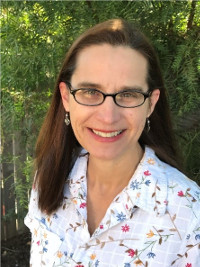About Braille Brain
Braille Brain History
Braille Brain is a user-friendly, web-based training program consisting of three courses designed to support instruction of the literary Unified English Braille (UEB), Nemeth (mathematical and scientific notations), and UEB Math codes. Each course includes several units with structured lessons and activities that build upon one another to promote proficiency in each of the three targeted braille codes. A fourth component of the web-based program includes additional practice activities, assessment, and resources. These additional instructional materials incorporate evidence based practices from the Reading Adventure Time (Kamei-Hannan, et. al, 2020) and Writing Adventure Time (Songkhao, 2019) apps. Braille Brain is a no cost, readily accessible program for individuals who want to learn braille, including students learning braille, family members of braille readers, and professionals working with individuals with visual impairments.
California State University and the American Printing House for the Blind have collaboratively worked to develop high quality, state-of-the-art technology used to deliver UEB and Nemeth braille instruction. California State University field test data showed, 100% (n = 80) of users agreed or strongly agreed that the courses were of high quality (based on a 4-point scale). One hundred percent of users also agreed or strongly agreed that the materials were well paced, as well as organized. Users also agreed or strongly agreed the materials were engaging [100% for literary (n = 56); 95.9% for Nemeth (n = 24)] and user friendly (92.9% for literary (n = 56); 87.5% for Nemeth (n = 24)]. Each of the three courses were designed by expert curriculum and content writers who have upheld rigorous expectations. The curriculum includes over 20 units per course, leading to braille proficiency. Pre-service professionals who completed the literary and Nemeth courses agreed or strongly agreed that the materials were comprehensive (96.4% for literary (n = 56); 100% for Nemeth (n = 23)]. Moreover, the project has led to an increase in the number of braille proficient professionals entering the workforce. Lastly, dissemination of research supporting the use of Braille Brain has occurred with partnering universities, agencies, and at professional conferences. Professional presentations have occurred at four international/national conferences, the International Association for the Education of the Blind and Visually Impaired (AERBVI), St. Louis, MO, July 2022; Council for Exceptional Children (CEC), Louisville, Kentucky, March, 2023; California State University, Northridge (CSUN) Assistive Technology Conference, Anaheim, CA, March, 2023; and the California Transcribers and Educators for the Blind and Visually Impaired (CTEBVI), Burlingame, CA, April 2023. Project leaders are pleased to share this content with you and hope that you enjoy learning braille.
Organization of the Braille Brain Materials
The Braille Brain content is organized into four main sections, as described below.
- Foundations of UEB – In the course, users learn the alphabet and braille contraction symbols, as well as the rules for using contractions. Punctuation, numeric, and some math symbols also are included in this course. The materials are meant to supplement formal instruction on the braille code and should be used in conjunction with the The Rules of the Unified English Braille Code. Any certificates earned in using this program verifies that a user completed materials within the course; certificates do not provide proof of one’s braille proficiency or act as certification in braille.
- Foundations of UEB Assessments – This section is dedicated towards providing graded reading evaluation tools that may be used to provide educators with additional information about the use of braille during reading and writing activities. These tools are meant to supplement evaluative processes, and they should not be used as a replacement for formal assessment procedures. Moreover, qualified professionals who know braille should be involved in the interpretation of data.
- Advanced UEB – In this course, users learn additional symbols used in advanced math. The materials are meant to supplement formal instruction on advanced braille codes and should be used in conjunction with the Provisional Guidance on Transcribing Mathematics in UEB and The Rules of the Unified English Braille Code. Any certificates earned in using this program verifies that a user completed materials within the course; certificates do not provide proof of one’s braille proficiency or act as certification in braille.
- Nemeth – In this course, users learn mathematical symbols represented in the Nemeth braille code, within the context of the Unified English Braille code, including guidance on switching between UEB and Nemeth code. The materials are created to supplement formal instruction in the Nemeth braille code. For additional rules please the Braille Authority of North America's Guidance for Transcription Using the Nemeth Code within UEB Contexts. Any certificates earned in using this program verifies that a user completed materials within the course; certificates do not provide proof of one’s braille proficiency or act as certification in braille.
Lead Curriculum Writer

Kim Blackwell has taught a wide variety of students over the last 25-years. She has taught bilingual education, at-risk intensive classes, reading resource, and she specializes in teaching the visually impaired. Her passion is bringing others into the VI field in order to make the biggest impact on students who have blindness or a visual impairment. Kim has participated as a content writer for the iBraille Challenge (iBC) and Reading and Writing Adventure Time Mobile Apps, funded through the Office of Special Education Programs (OSEP) and for Stepping Up Technologies; Braille Brain, funded by the U.S. Department of Education, Rehabilitation Services Administration (RSA). She received her Education Specialist Credential in the field of visual impairment, a BCLAD multiple subject credential, a Master of Arts in the teaching of reading, and a Reading Specialist Credential.
Additional Content Authors
Frances Mary D’Andrea, Rachel Schles, Jonathan Hooper . Lauren Hanner. David "Rusty" Perez, Anita Yasuda and Erika Priser and Martha Castiglia
Lead Researcher

Cheryl Kamei-Hannan, Ph.D. is a professor and researcher at California State University, Los Angeles. A leading expert in the field of visual impairment and blindness, her research agenda focuses on language, literacy, and access technology. She is co-author of Reading Connections: Strategies for Teaching Students with Visual Impairments, and co-editor of the textbook series, Foundations of Education (3rd Ed.). As primary investigator on several grant funded projects, she has led the development of interactive apps to support braille literacy including the iBraille Challenge (iBC) and Reading and Writing Adventure Time Mobile Apps, funded through the Office of Special Education Programs (OSEP), Stepping Up Technologies; and Braille Brain, funded by the U.S. Department of Education, Rehabilitation Services Administration (RSA). Her most recent intervention study integrated a multi-sensory storytelling approach with storytelling to enhance language and literacy skills of young children with visual impairments (Kamei-Hannan, Chang, and Fryling, 2020). Dr. Kamei-Hannan earned her Doctorate of Philosophy (Ph.D.) at the University of Arizona with a specialization in Visual Impairment and a Master of Arts (M.A.) degree in Special Education, along with credentials in Visual Impairment and Blindness and Orientation and Mobility from San Francisco State University. She has worked in the field of visual impairment and blindness for over twenty years as personnel preparation coordinator, researcher, reading specialist, middle school language arts classroom teacher, itinerant teacher, and a resource room teacher of students who are visually impaired.

Gina Michell is a Teacher of Students with Visual Impairments in Southern California and a Faculty Lecturer at California State University, Los Angeles (Cal State LA). Gina draws on her prior experience as a general education teacher to build comprehensive and meaningful programs for her students with visual impairments. Her passions are teaching reading and the expanded core curriculum (ECC). Gina’s grant projects include content editor for the iBraille Challenge (iBC) and Reading and Writing Adventure Time Mobile Apps, funded through the Office of Special Education Programs (OSEP), project manager for Stepping Up Technologies; Braille Brain, funded by the U.S. Department of Education, Rehabilitation Services Administration (RSA), and online course development grants through Cal State LA in partnership with Quality Matters (QM).
